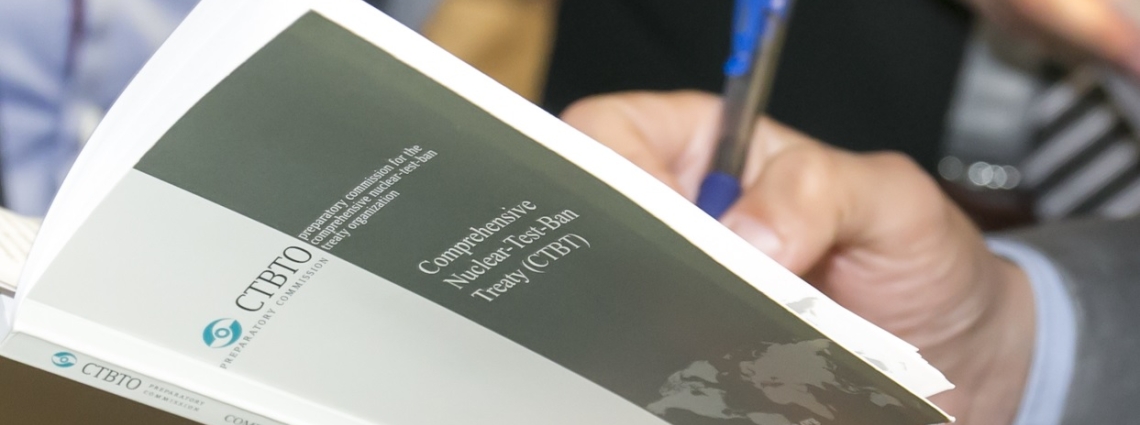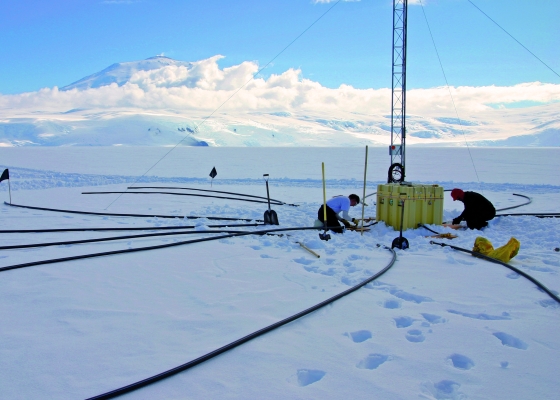Text of the Treaty
The Comprehensive Nuclear-Test-Ban Treaty
The Comprehensive Nuclear-Test-Ban Treaty (CTBT) bans all nuclear test explosions, whether for military or civilian purposes. The Treaty was opened for signature in 1996 to stop the development of new nuclear weapons and prevent upgrades to existing ones, supporting global efforts in non-proliferation and disarmament.
Another key document is the resolution adopted by the States Signatories on 19 November 1996, which established the Preparatory Commission for the Comprehensive Nuclear-Test-Ban Treaty Organisation (CTBTO).
Although the Treaty has not yet entered into force, it has made a significant contribution to international peace and security. It has helped to establish a strong global norm against nuclear testing and built confidence that any nuclear test explosion would be reliably detected.

Summary of the Treaty
The Treaty consists of a preamble, 17 articles, two annexes, and a Protocol with two further annexes.
The preamble outlines the significance of the Treaty as an important nuclear non-proliferation and disarmament measure.
Articles of the Treaty
Article I stipulates the basic obligations under the Treaty. It states that each State Party agrees not to carry out, encourage, or support any nuclear weapon test explosion or other nuclear explosion, and undertakes to prohibit and prevent such activities at any place under its jurisdiction or control.
Article II provides for the establishment of the Comprehensive Nuclear-Test-Ban Treaty Organization in Vienna to oversee the implementation of the Treaty and to serve as a forum for consultation and cooperation among States Parties.
Article III focuses on national implementation measures, requiring each State Party to take the necessary legal and administrative steps to give effect to its Treaty obligations.
Article IV elaborates on the global verification regime to monitor compliance with Treaty provisions. The regime is to comprise a global network of monitoring stations (the International Monitoring System ), an International Data Centre in Vienna, a consultation and clarification process, On-site Inspections and confidence-building measures .
Article V outlines measures to redress a situation which contravenes the CTBT provisions and to ensure compliance with the Treaty.
Article VI deals with the settlement of disputes that may arise concerning the application or the interpretation of the Treaty.
Article VII is concerned with amendments to the Treaty.
Article VIII stipulates when a review of the Treaty will take place after its entry into force .
Article IX states that the Treaty is of unlimited duration.
Article X deals with the status of the Protocol and the annexes.
Article XI is concerned with signature of the Treaty.
Article XII deals with ratification of the Treaty.
Article XIII is about accession to the Treaty.
Article XIV is about the Treaty's entry into force . This will take place 180 days after the 44 States listed in Annex 2 to the Treaty have all ratified.
Article XV specifies that the Treaty shall not be subject to reservations.
Article XVI refers to the Depositary of the Treaty.
Article XVII deals with the authenticity of Arabic, Chinese, English, French, Russian and Spanish Treaty texts.
Annexes of the Treaty
Annex I to the Treaty lists States by geographical region for the purpose of electing members to the Executive Council.
Annex II to the Treaty names the 44 States whose ratification is required for the Treaty to enter into force.
Protocol Part I outlines the roles and functions of the International Monitoring System (IMS) and the International Data Centre (IDC).
Protocol Part II sets out the procedures for conducting on-site inspections.
Protocol Part III covers confidence-building measures intended to support verification and compliance.
Annex I to the Protocol lists the facilities that make up the IMS network.
Annex II to the Protocol defines the parameters used by the IDC for standard event screening.

